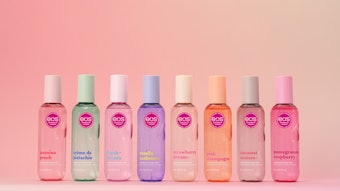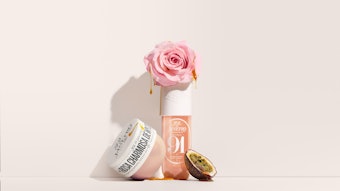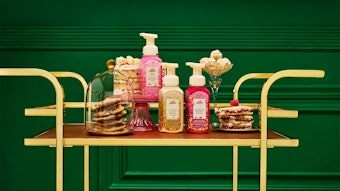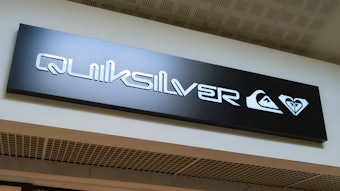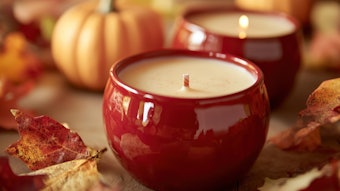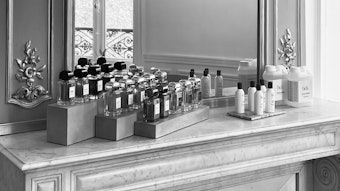Artist Sissel Tolaas’ latest project pushes the boundaries of the art of fragrance and its ability to communicate
The first logical question you want to ask multi-media artist and scent communication specialist Sissel Tolaas is: “Do you wear perfume?”
“No,” she says, “I stopped a long time ago.”
Raised in Iceland and Norway and now based in Berlin, Tolaas is interested in fragrance less as a decorative element than as a tool for communication. Since 1990, her wide-ranging projects have involved Comme des Garcons, Volvo, IKEA, H&M, IFF (for whom she consults via a smell communication laboratory installed by the company), Sony Computer Science Laboratories (with whom she’s developing a scent dictionary of sorts) and MIT. Her many projects have included “smell maps” of several cities, including Paris and Berlin—daily scents of various urban locales recreated/synthesized by perfumers under Tolaas’ direction. Here, as in all of the artist’s work, notions of good or bad olfactive descriptors are irrelevant, even bothersome.
“We are able to smell and memorize up to 10,000 smells—and we have two words to communicate them,” says Tolaas. “There must be something wrong.”
Tolaas has a modest chemistry education, but she never wanted to be pigeon-holed within a university focusing on just one discipline.
“What interested me was very much the nothingness [of chemistry]—what does the nothingness consist of?” she says. “How can I make the invisible visible? That was my starting point: taking things apart and putting them together.”
Tolaas’ first addressed the invisible with a focus on the weather of her native Iceland and Norway.
“Why is the weather so important?” she asked herself. “Why do we communicate the weather only [in terms of] bad and good when there are so many variations?”
Inspired by the invisible and curious about the interesting scent molecules in the air in Iceland, Tolaas dove into fragrance as a medium. As her interest in smell communication grew, she found that the same challenges inherent in weather applied to scent—the limitations of “good” and “bad.” What she found particularly interesting—and what the traditional perfume industry faces in commercializing scents—is that she, as a lay member of the public, had never had any education in using her nose.
“We lost the nose somewhere in the evolution,” she laughs.
So, on her own, Tolaas began collecting smells that interested her and training herself to smell in a more sophisticated, nuanced way.
“I was able to learn the alphabet,” she says. “Why wouldn’t I be able to learn smelling, to learn smell, to test that and … learn to think through my nose?”
NOSOEAWE: the Scent of Berlin
The process of creating scents based on the true smells of cities led Tolaas home to Berlin, where, working with perfumer Geza Schoen, she developed NOSOEAWE—named for the four points of the compass.
“I took extreme neighborhoods of Berlin and put them together,” she says. “This is the air we smell, this is our neighborhood … I focused on [placing] the so-called bad and good [next] to each other, and some are very extreme—you might call it bad if you had no other word, but in the overall context, they get a completely different [impression].”
Perfumers tell stories with their scents—tales of love, of sunlight, happiness, nature, mystery. Fragrances developed under Tolaas’ direction tell stories too, but while most traditional fragrances are wide-screen fantasies, her works are gritty documentaries.
“If you can take just the air filled with invisible molecules you say much more about the neighborhood than a building [can].”
Of course, working with perfumers in the past has led to some friction. After all, noses spend their lives trying to make raw materials sing, to create scents that may be provocative, but are always ultimately beautiful. On the Paris city scent project, Tolaas bumped up against this instinct.
“I had so much hassle because the perfumers in Paris were afraid of the smell of Paris,” she says. “I wanted to find the smells of subway stations and streets and butchers and perfumers would say, ‘Why won’t you make our interpretations?’ I’m not interested in interpretation. I want the reality. ‘Please copy the reality.’ It took me a hell of a lot of time just to get to that point where they understood this is not about the fantasy—this is about reality.
“Something has to change. Nothing’s bad and nothing’s good. We underestimate the consumers naturally because we don’t have training for noses in out society. I’m so sick of all this stuff about bad and good. I don’t even use the words anymore myself.”
FEAR of Smell—the Smell of FEAR
Attached to Tolaas’ Berlin studio is the IFF re_searchLab, a space where the artist can focus on personal and commercial smell communication projects and host visitors. Touring globally, Tolaas’ latest fragrance project—FEAR—has been garnering serious press attention. The project is the result of Tolaas’ collaboration with 16 men over five years. Each man suffers acute phobias, strong fears in particular situations.
“What interests me is just their sweat,” she says. “I developed a small tool they put under their arms the moment they get these [anxiety] attacks. It sucks up the sweat…and I copy it as much as I can, as close to original as possible.”
How do her perfumer collaborators react to such strange projects?
“They all think I’m crazy,” she laughs. “But then, when they start to see the results, they think it’s interesting.”
Once the resulting nine fragrances were microencapsulated, they were applied to installation walls via a translucent varnish in 2 m x 2 m swaths. Visitors could then touch these areas—described by Tolaas as being “like a skin on the wall”—releasing the scents of sweat and fear into the air.
“The amazing thing is that all the sweat is all different,” says Tolaas. “It’s really about the body as a tool of communication.
“How does our body smell? What does a body’s scent tell … If we get rid of all the extensions—all the soaps, the creams, and if we only listened to our own body smell. Because we forgot that our own body actually smells because we are so used to putting layers and layers of other smells on it. It’s about cutting back to zero, which is one of my big issues. Where did we start?”
Tolaas, always busy with corporate clients and her own work, will go to the North Pole with a delegation next year to retrieve samples of snow and ice for a future project. In addition, she is interested in sampling scent molecules from the air in Iceland.
“Every smell is so interesting,” she says. “I don’t have a favorite. All smells for me have the same value and have potential for whatever purpose and reason.”


